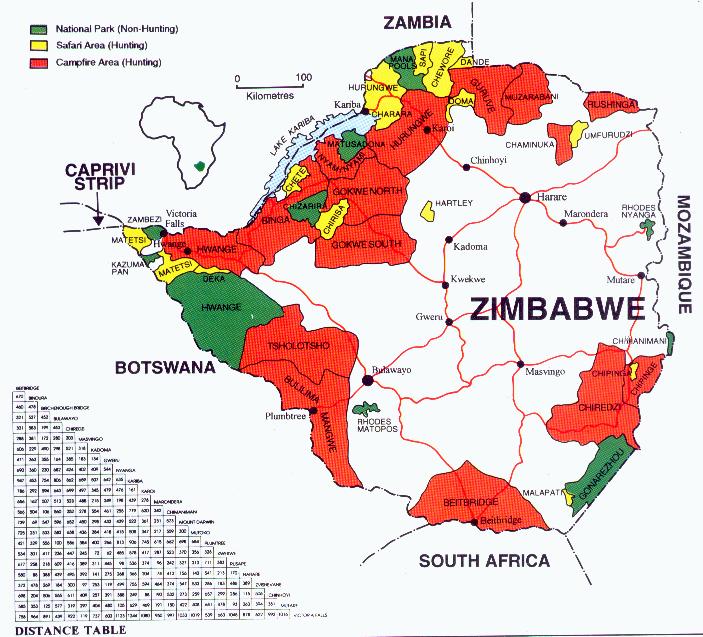

 The Accurate Reloading Forums
The Accurate Reloading Forums  THE ACCURATE RELOADING.COM FORUMS
THE ACCURATE RELOADING.COM FORUMS  Hunting
Hunting  African Big Game Hunting
African Big Game Hunting  Zambezi lion study
Zambezi lion studyGo  | New  | Find  | Notify  | Tools  | Reply  |  |
| one of us |
I received this report from the African Wildlife News today Spring 2004 issue. INITIAL RESULTS OF ZAMBEZI LION STUDY OFFER HOPE In Zimbabwe, the area of land south of the Zambezi River below the Kariba Dam and east to the Mozambique border is set aside as a wildlife conservation area. This large tract of land (over 6,210 square miles) consists of safari areas (consumptive tourism) and park areas(non-consumptive tourism). There are no human settlements in the area apart from park accommodations. A research project to establish the population dynamics of lions (Panthera leo) in the mid-Zambezi Valley has been underway since 2001. It is partly funded by AWF. This is the first such study to be carried out in the Zambezi Valley, Zimbabwe. Fourteen lions from five different prides have been radio-collared. The prides are regularly tracked and information on pride structure, behavior, and prey species is collected. So far the population structure of lions in the park shows the same population characteristics as lions in other conservation, non-hunted areas in Africa. This indicates that the population is healthy and is not being subjected to human disturbances, disease, or imbalances with competing carnivores such as the spotted hyena (Crocuta crocuta). In Mana Pools National Park, visitors are allowed to walk unaccompanied by professional guides despite the presence of potentially dangerous, free-ranging wildlife such as elephants, buffalo, and lions. This unique privilege has resulted in remarkably few wildlife/human conflicts. Lions are naturally secretive animals. They appear to avoid visitors on foot by hiding in thick vegetation. Our studies have shown that lions are seen in open areas (such as on and near the road), where they can be easily seen, only 5.3% of the time. Lions are seen in moderately vegetated areas 35.1% of the time. And for 59.6% of the time, lions are found in dense vegetation where there is very little chance of tourists seeing them. The tendency is for the lions to hide from humans on foot, but we have been able to closely approach lions by vehicle. We only find lions in thick bush by tracking the radio signal coming from their collars. When we get a glimpse of the lions resting in the open, we find that they soon become aware of us over fairly large distances and will make their way into thick vegetation where they are well hidden. The mean pride size on the Park floodplain is 5.5 (adults and sub-adults only). In the south of the park at the foot of the Zambezi Escarpment, there is a pride of 18 lions. The prey base is excellent and concentrated around a spring. It supplies the only water for a large area. In the rainy season (November through March), this pride splits up into smaller groups as the prey move away from the spring. The structure of a normal population has been successfully established for a non-hunted area of the same ecosystem. Now the research will focus on obtaining population dynamics in the safari areas where lions are offered on quota for sport hunting. This aspect of the study will be more difficult because the lions are more alert and difficult to dart. All darting is carried out at night. Lions are called out by broadcasting the distress calls of pigs and calves. Darting can only take place from about 40 yards away. But we have found that the lions are too nervous to come this close. We are investigating other methods of administering the immobilizing drug, such as spiking the bait. Once the population characteristics of lions are known for the safari areas, sustainable hunting quotas can be set based on empirical data. Then management recommendations can be put forward. At present quotas are set using an educated guess. This project has important management implications and is considered vital for the future of this vulnerable species. Kathi kathi@wldtravel.com | ||
|
| one of us |
From what I have seen the past 3 years in Matetsi lions just arnt around as much. I wouldnt be upset at all if they banned lions for a couple years or cut back on the quotas. The problem with a ban is its hard to un-ban so a cut back would probably be a good solution. Lion hunting is special and to lose it forever would be a shame. losing all the lions is a shame too. Hopefully a study and implementation of a workable solution will happen. | |||
|
| Moderator |
On National Geographic I've recently seen a show about the lion pride that controls the spring in the southern Mana Pools area. Here's map showing the area.  | |||
|
| Powered by Social Strata |
| Please Wait. Your request is being processed... |
|

Visit our on-line store for AR Memorabilia

